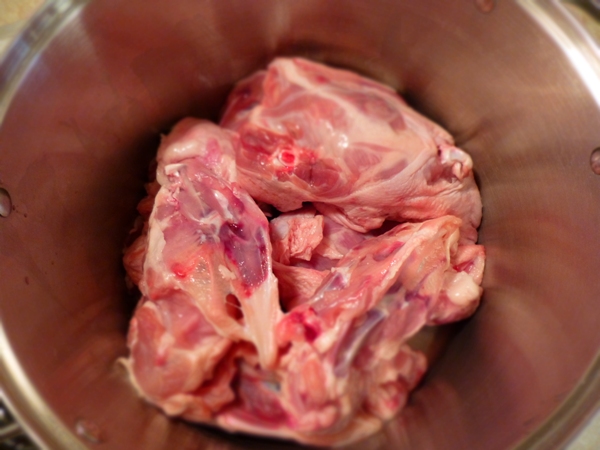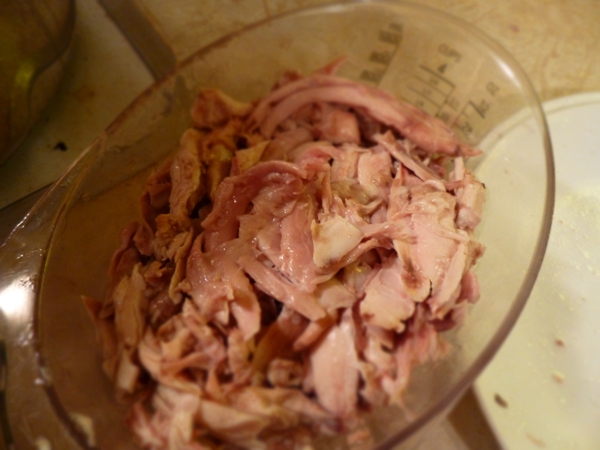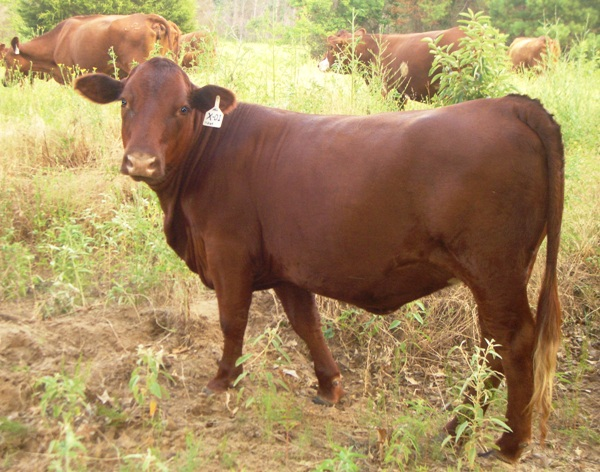How Do We Make It To Market?
If you’ve ever shopped at a farmers market, or perhaps been lucky enough to visit several different ones, you’ll realize that it is usually a totally unique experience—for better or worse, it is nothing like shopping at a supermarket or a mall.
In some cases, there are similarities to conventional shopping outlets. A large market like Shreveport’s will have traffic and noise and lots of people. But shoppers find that it’s worth the inconvenience because the vendors come from a larger radius and thus can offer a wider variety of produce during the market season.
Indeed, in my own short experience with the Shreveport Farmers Market, I have seen everything from shrimp, cheese, and rice to sweet corn, cutting boards, and fresh-ground peanut butter. Smaller markets usually feel the burden of seasonal challenges more strongly (meaning you might see just a whole bunch of okra and eggplant come August), but they are easier to navigate and have a more laid back atmosphere. Whatever the size of the market you attend, have you ever thought about what it takes to get to market?
Surely as a shopper you have gone through your mental checklist: “Cash, canvas bags, shopping list, stroller for carrying things, cooler for cold items, recycled bags, egg cartons,” etc. You probably dress especially for the outdoor atmosphere of your market—hat, sunglasses, walking shoes. The challenges you overcome are many (besides the parking!): no air conditioning (unless you happen to be really lucky!), no shopping carts, and no 24-hour service. Often enough, there are no credit card machines or bathrooms!
But still you persist because you recognize the value of the local and the seasonal. It tastes great and you are building a sustainable food system in your area. It’s worth the inconvenience to make it to market, right?
But what about the folks who work to make your market?
Let’s take a moment to step into the worlds of the vendors and market manager on market day.
The Vendors
We get up before dark. Before the roosters even start crowing, we go through our checklist, willing the coffee to kick in so we can think clearly in the early morning hours. There are a few things that we absolutely can’t function without—the change stash, the price list, the extension cord, the plastic bags. Everything gets loaded and off we go. We pray on the way that there won’t be delays or traffic jams or accidents. In the world of the one-and-only freeway, we just hope that there won’t be a holdup with no detour, because if we don’t make it through the gate by 6:30, they won’t even let us into the pavilion to sell.
But the work starts way before 6:30 in the morning on market day! In fact, when we hit the ground after the last week’s market has ended, our work begins. Picking the crops, tending the animals, milking the cows, collecting the eggs. There is so much to do. It’s like the sports and the big game. You prepare all week for a few hours’ of glory-time. Then, win or lose, when it’s over, you begin again.
When we get there we start the set-up. By the end of the summer it becomes so automatic that we hardly have to keep our eyes open, and we are grateful for a little more brain-rest time. Some vendors come up with clever additions to their booths. Decorative flowers, rubber mats to stand on, shade tents, mister fans, product samples, information handouts, even cold drink for sale. Anything to help attract customers and to make the market experience more pleasant for both shopper and vendor.
By the time the opening bell rings at 7, we’ve been working for almost 4 hours already! So when our faithful customers bring us gifts of fresh coffee or homemade cake or even a bit of homebrew—wow! Does it make our day!
When we smile at you, the passerby shopper, don’t feel scared off. We’re proud of our hard work and our interesting products. Please take your time and browse! After all, when you’re standing there, it helps others to feel comfortable to step up and take a look, too.
But remember the unspoken rule at market—if you’re not buying, please don’t make a potential customer wait while you chat with us. Wait until we’re done transacting. After all, that’s why we’re there. It’s fun to chat, but shooting the breeze doesn’t pay the bills!
When you bring along your shopping list, please leave room for flexibility. If we don’t have what you’re looking for, ask us for ideas. Don’t be afraid to try what’s in season. After all, that’s why you’re here! What local food lacks in convenience it makes up for in flavor! In other words, you may have wanted cabbage, but it might already be sweet corn season. Are you willing to try something new for the sake of seasonality?
Here’s an insider secret—it floats our farmer boat when you want to buy what we farmers want to sell. If we have gobs and gobs of tomatoes but you’re disappointed because our figs haven’t come in yet, please buy some tomatoes! If we’re running a special on chicken soup bones but have run out of beef stew meat, adjust your mealplan and make chicken soup this week! Farmers have the unique challenge of being controlled by seasons and nature. We can’t call up our overseas warehouse and ask them to ship another containerful of that out-of-season crop. We have what the earth yielded, and hearing, “Well, I’ll check back next week,” can be pretty disheartening. Those tomatoes won’t keep until then, and the birds may get to our figs before we do.
At noon, the closing bell rings and we collect our belongings as quickly as we can to begin the trip back to the farm. Most of us head home to work again. Milking the cows, collecting the eggs, watering the veggies. Then a little rest finally, after the chores are done.
By the time we get home, it might have been a solid 12-hour work day or longer, and that’s before the evening chores! But our memories of the interesting questions and conversations at market replay in our minds as we wind down and prepare for another week of market preparation.
Our warmest memories are in knowing we taught you a little something about the land or from hearing your stories about how tasty our products were in the dish you made last week. It is a special thing to sell to friends at our local farmers market.
***
The Market Manager
Perhaps even less considered than the vendors’ pre-market preparations are the preparations of the market manager, which start long before the customers even start making their shopping lists! I interviewed our market manager for this article.
Meet Noma, manager of the Shreveport Farmers’ Market, the largest farmers’ market in the Ark-La-Tex.
Sorry to switch styles on you, but Q&A worked best for this section!
What things do you have to do and think about and bring with you before market even begins?
Because the farmers/ranchers are still the heart of this market, I think about them and their needs first. They are the ones who get plugged into the layout first. I won’t say the other things are “filler,” as they are well-loved by our public, but it is, after all, a FARMERS’ MARKET. People have come to expect the vast variety we offer.
There are a million logistical challenges involved – will their trucks/trailers fit; I don’t want people selling similar things too close together; do I have water for sale in all areas; who needs/gets electricity; all those sorts of things. In fact, getting all of this figured out is one of the biggest parts of my job.
When do you start preparing for each market?
Generally, I start coming back in, as I am part-time/seasonal, in about January. That’s when we’ll get the calendar from the City that dictates our dates. I start planning the meetings that take place in early Spring. I get all the notices and press out for that, which takes place generally in March or April.
What are your responsibilities during market?
My duties have really changed a lot this year, for this is the first year I’ve had employees working for me. The employees cover collecting payments from the vendors, and make sure rules are being followed, etc, while I answer questions from the public at the Info Tower.
This was also the first year we’ve been able to accept SNAP, so a lot of my time goes to doing that. Although it’s time-consuming and does not add anything financial to the market, we think it’s important to give the opportunities to have healthy foods to all segments of our community.
In theory, I should be at the Tower all the time, but there are still things “only Noma can do” at times, so I tend to be here and there throughout the hours we are open.
What else would you be doing if you weren’t at market?
I have two other jobs that I work around my season at the market. I am a free-lance writer with a regular gig with Forum Magazine, writing mostly about interesting homes. I also work for LSU Medical School as a monitor in their Standardized Patient program.
I am supposed to be a creative writer and an artist, but I don’t find a lot of time for that these days. Still, something occasionally pops out.
I have big old 1921 house that I love, and pets. I’m really a homebody when not at the market.
What unexpected events make your day at market? Is there anything special that happens or that someone does from time to time that make it worth your while?
When people tell me how much they love our market, I just glow. It’s what I want to happen. It was also very fulfilling to have people coming to the Info Tower and pointing to the East End and asking, “What’s down there?” It finally validated that the West End is getting the attention it deserves. I strive to be fair, and that was a great indicator that things are finally beginning to balance.
Another exciting facet of our market’s growth is getting the great media coverage we’re receiving. So many times, TV stations or reporters or documentarians come into our market with the knowledge they’ll get a great, heart-warming story. I do not care for my image on video or the sound of my voice, but as long as I don’t have to watch it, I’d do just about anything for this market.
What are your challenges on a typical market day, and what do you do to compensate for them?
Complaints are not fun, and I get them from all directions – the public, the vendors, the various entities that put the market together. I try to listen and let people know why things are how they are, or learn from the feedback. For instance – the bathrooms under the Spring Street Bridge are being refurbished. It is very inconvenient for both vendors and shoppers. However, there really is no good time to fix them. Festival Plaza is a multi-use space that is in use almost continually. The only other time available would be the dead of winter when freezes might disrupt the plumbing improvements. There are other bathrooms, just a few yards further. It’s not the best thing in the world, but when people realize that most markets don’t have bathrooms, or electricity, or the need of so many parking places, it kind of puts it in perspective.
I was a vendor before I took over as manager of this market. I try to just make the market that I’d want to sell in. One that offers diversity to the public, opportunity for the vendors, and a destination for the City. And in all honesty, I love what’s been happening here. That’s compensation enough.
***
The 2013 Shreveport Farmers Market season ends at noon on August 31. The fall market starts on Saturday, October 26 at 8:00 am and runs each Saturday through November 23. You can keep up with Market announcements by following their facebook page or by visiting their website.
Shady Grove Ranch will provide deliveries to Shreveport every two weeks while the market is closed in September and early October, then again in December through May.

















































